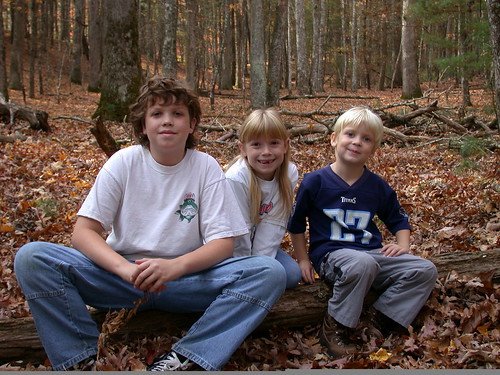You will hear this over and over again in your homeschooling years because it is SOO important: There is NO ONE RIGHT curriculum and there is no one right way to teach! But especially at the kindergarten level, I would say that you really don’t need a curriculum at all. But—you can build your own curriculum with very little investment. (I love Sonlight, and I did buy Sonlight’s kindergarten curriculum. I am a big advocate of Sonlight; however, I would not buy the whole shebang again were I to do it over. )
Here is what I personally would do (and will do next year) for a kindergartener: READ, READ, READ!!! I cannot emphasize enough what tremendous benefits—long term benefits—your child will receive when you read outloud to him. He will be a better speller, better reader, have a better vocabulary, and make better connections when he has been read to consistently and lovingly. And that is just the tip of the iceberg. Find a great reading list. I love Sonlight’s reading list better than any other. Honey for a Child’s Heart by Gladys Hunt is a wonderful book that talks about the importance of reading and gives you lots of suggestions. Please don’t let a day go by without reading aloud to your child, even if he is challenged with auditory processing. You can hardly go wrong by looking at a homeschooling catalog and using the books that publisher sells for kindergarten. Five in a Row has a great selection of books, also. And if your child really likes a book by one author, keep reading more by that author. That leads us into reading skills. You will want to introduce your child to letters. There are dozens of websites that feature easy ABC activities. We spent much of the K year making an alphabet book—just finding pictures to put on an A page, for example. If your child likes workbooks, you can invest in some at Walmart for less than $10 that should probably last you the whole year, or you can just print sheets off the internet. You can easily get a whole year’s ABC, science, geography, art, etc. program from Enchanted Learning , Starfall and from ABC Teach --to name just a very few. Great handwriting sheets are at Donna Young .
 Reading: We purchased Teach Your Child to Read in 100 Easy Lessons, used for about $7. We did about 30 lessons in kindergarten and the rest in 1st grade with my daughter. She was just NOT ready for it. I didn’t force it because I didn’t want to spoil her love for learning. I could just tell that she wasn’t emotionally ready for that serious of a program. Other people have used it with their 4 year olds, so again—everyone is different. We picked it up again in first grade, and she did GREAT. I'll use this next year for my next kindergartener.
Reading: We purchased Teach Your Child to Read in 100 Easy Lessons, used for about $7. We did about 30 lessons in kindergarten and the rest in 1st grade with my daughter. She was just NOT ready for it. I didn’t force it because I didn’t want to spoil her love for learning. I could just tell that she wasn’t emotionally ready for that serious of a program. Other people have used it with their 4 year olds, so again—everyone is different. We picked it up again in first grade, and she did GREAT. I'll use this next year for my next kindergartener.You can, of course, spend around $100 on a program like Sing, Spell, Read, Write, which lots of folks LOVE. This might be a great choice for a very hands-on learner.
Handwriting: You can buy workbooks or just print off the internet. We have always used A Reason for Writing. It was mostly coloring pictures. Don’t expect too much out of them with handwriting! Developing those fine motor skills comes with age. Playing with playdough, by the way, is a great way for kids to flex and strengthen those fingers. Be sure to have a great store of playdough around.
Math: Again, take math slowly. You don’t want burnout! We did about 1/3 of Saxon 1 in kindergarten. I personally wouldn’t bother with Saxon K, as it is geared more toward preschoolers. There are so many math program out there. There's nothing wrong with buying workbooks at Walmart at this age! Talk to people. If you don't want a text, you can do math everywhere naturally: dividing treats among 4 people; counting ants; adding rocks together; cooking. There will be plenty of time for math skills as they get older. For now, keep it fun. Introduce them to shapes, colors, etc.
Science: Again, reading aloud to your child for science is wonderful. There are loads of wonderful books in the library! If your child is interested in a particular topic, follow that interest! My kids love to be outside, so we’ve done a lot of nature journaling. We will just go outside and study a certain area. We may all draw a certain plant. We keep a birdwatching book on hand and examine any insects that come along while we’re outside. Of course you have the mountains for hiking and examining plants, rocks, etc. You don’t have to do anything formal—just expose them to the world. Gardening is great if you have that option. Get some fish. Let them take apart a broken small appliance like a radio or a coffee maker. Let them make boats out of foil or cardboard and try to float them. I like Usborne’s Science Experiment books tremendously.
ART: Yes! Lots of it! Have plenty of art materials available. You don’t need to have a curriculum for art at this age. Just let them create. My kids love the Usborne art books. They get good ideas from them. We have two big tubs for what we call “inventing supplies”: toilet paper rolls, boxes, coffee cans, Styrofoam; whatever odds and ends you have. Let them explore freely with this, if they enjoy that! Have plenty of paper, markers, glue, paints, etc.
 PE: We play something outside every day, weather permitting. Kickball, Frisbee, badminton, etc. Go to the park. Go for a walk. Take a class like gymnastics or soccer or basketball. There are plenty of opportunities.
PE: We play something outside every day, weather permitting. Kickball, Frisbee, badminton, etc. Go to the park. Go for a walk. Take a class like gymnastics or soccer or basketball. There are plenty of opportunities.So that's my quick overview of kindergarten, but I do want to emphasize the two most important points that you can apply to any age: 1) there is no one right way to teach your child nor one right curriculum and 2) READ ALOUD EVERYDAY.
One more thing about learning styles:
Let your child be himself. If he needs to play with Legos while you read or dangle upside down from the couch, it's OK. He is probably listening to you in his own way! Let your son learn the way he learns best! That is one of the joys of homeschooling.
A Few More Tips:
* Just remember not to be a slave to the curriculum. Let it work for you, and if it's not working, try something else. Similarly, if you find something that works—don’t switch it just because someone else is doing something that sounds interesting!
* Little ones can only sit for about 15 minutes at a time. You can scatter your teaching times throughout the day.
* Keep it fun, if they're not having a good day, put it off until later or even the next day.
One final word about kindergarten: the origin of kindergarten lies with the Prussian model of schooling and was instituted to remove children from the influence if their parents at an earlier age. Read John Taylor Gatto’s The Public School Nightmare for more information on this.
Proceed with caution in the early years! The early school years are when a child develops life-long attitudes about learning, so parents must take extreme care not to make learning frustrating. It is at this age that a child also begins developing an attitude about his ability to learn based on his success in school and based on the feedback he gets from the important people in his life.
The very best course of instruction for kindergarten aged children is learning that comes through having Mom and Dad read aloud a large and varied selection of books. AND—be happy and relaxed! If you are happy and enthusiastic, your child will be, too. We all have really bad days, but even on my worst day, when all the kids are bickering and I’m tired and we’ve gotten nothing done and my oldest can’t remember 7 times 8 and my daughter can't remember what a noun is and my preschooler wants a snack ALL DAY LONG—even on those days I never once threaten to send them all to public school.






